Gear clamps. A simple product, right? The short answer is yes. The long answer begs the question, what about them makes them simple and trustworthy?
Not all gear clamps are designed and manufactured in the same way, making you wonder what are the differences and how does that effect the performance?
In this blog, we will cover two common construction types; 3 piece and 4 piece interlocking system designed gear clamps and their strength and weaknesses, the different series available, we will debunk a common misconception and conclude with our Quality Assurance testing.
First, let's start with what exactly a gear clamp is, just to give us a refresher.
What is a Gear Clamp?
Commonly, gear clamps are referred to as worm clamps or hose clamps. Throughout the blog, we will refer to them as gear clamps. Gear clamps are commonly used to fasten polyethylene (PE) pipe, made to standard ASTM-D2239 (Inside diameter controlled PE pipe). They are also used to secure a wide range of hoses to hose fittings such as combination nipples and hose menders.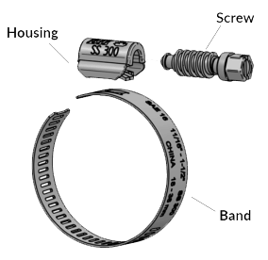
The screw rotates in the housing, which converts the movement to a linear motion, allowing the clamp band to open and close. The components of gear clamps are:
- band
- housing (saddle piece)
- screw
The housing component holds the screw in full engagement with the slotted band. When the screw is turned, threads of the screw engage in the slots, pulling on the band to close (tighten) or push open (loosen).
Clamps can be commonly found in plumbing applications, but can also be found in the automotive, water well and HVAC industries. Plumbers frequently use clamps to fasten flexible rubber couplings (FRC) to pipe and to clamp polyethylene pipe. Tightening the screw causes compression, securely fastening pipe, hose and flexible HVAC ducts, creating a positive seal.
As mentioned above, clamps can be found either with a 3 piece interlocking system or 4 piece interlocking system, but what is the main difference?
3 Piece vs 4 Piece Interlocking System
Torque testing is used to see how much force can be applied to the band when tightening the screw, before it breaks. Under the SAE standard, clamps are required to achieve 50-lbs/inch before breaking. As a reference, the average torque someone could apply with a standard nut driver is roughly 40 to 45-lbs/inch. Clamps are often installed using power tools that are capable of much more than that. Let's take a look at why we believe one design is stronger than the other.
Caution: When using power tools, ensure the speed is low and be cautious not to over torque. Standard or impact drills used at high speeds are capable of torque upwards of 60-lbs/inch, which should be avoided. Extreme speed can result in galling (cold welding) of the stainless components and high torque will strip the band, voiding the warranty.
3 Piece Interlocking System
 The housings on the 3 piece interlocking system attaches right to the band. In the picture, you can see that the housing wraps around the band and interlocks through the band on the inside. The tabs of the housing on the 3 piece design curl under the band, ensuring that when the clamp is
The housings on the 3 piece interlocking system attaches right to the band. In the picture, you can see that the housing wraps around the band and interlocks through the band on the inside. The tabs of the housing on the 3 piece design curl under the band, ensuring that when the clamp is tightened, the housing tabs get held between the pipe and the band.
tightened, the housing tabs get held between the pipe and the band.
The tighter the clamp, the tighter the housing is being clamped to the band and the more secure the interlock becomes. Due to this, our QA department strongly believes that the 3 piece interlocking system can get a higher torque rating.
You may come across a 3 piece design where the housing is spot welded to the band, however, this is a far less common manufacturing method so we will not go into detail. Boshart has not performed any independent testing on a spot welded gear clamp and therefore we cannot speak to the benefits or negatives of this design.
4 Piece Interlocking System
The 4 piece interlocking designs housing is built up of two separate pieces: the housing and the saddle. This introduces an additional failure point. The saddle sits underneath the band, holding the housing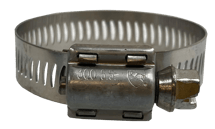 using four tabs. The housing is held together mechanically by forming the four outward facing tabs to hold the two pieces together. Since the tabs are on the outside of the band, the greater torque is applied creating greater force that is transferred onto the four locking tabs. Since there is
using four tabs. The housing is held together mechanically by forming the four outward facing tabs to hold the two pieces together. Since the tabs are on the outside of the band, the greater torque is applied creating greater force that is transferred onto the four locking tabs. Since there is 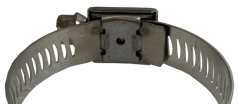 nothing keeping the bands from bending, the result is a very slight separation of the two housing pieces, decreasing the force.
nothing keeping the bands from bending, the result is a very slight separation of the two housing pieces, decreasing the force.
If that happens, the housing will push away as far as it can from the band, meaning that the screw will lose some engagement with the band slots. This increases the chance of the clamp stripping and why it is believed that the maximum torque is rated lower than that of the 3 piece interlocking system.
Different Series of Gear Clamps
87 Series
Our 87 series clamps have the highest corrosion resistance compared to the other series of clamps. All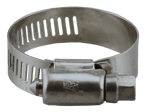 of the components are made from 300 grade stainless steel and they can be used in any application. The 87 series clamps are specifically designed for use underground for buried water pipe connections and in-well applications with no shielding.
of the components are made from 300 grade stainless steel and they can be used in any application. The 87 series clamps are specifically designed for use underground for buried water pipe connections and in-well applications with no shielding.
 67 Series
67 Series
All of the components of the 67 series gear clamp are made from 200 grade stainless steel. These clamps should not be used in buried applications.
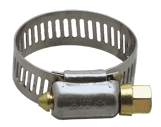
77 Series
The 77 series clamps include a 200 grade stainless steel band and housing with a plated carbon steel screw. These clamps can be used in applications where corrosion is not an issue. The colour of the screw allows for easy identification.
Misconception: Stainless Steel Magnetism
A common misconception is that austenitic grades of stainless steel like 300 grade are non-magnetic and if they are magnetic, then they must be poor quality or have less corrosion resistance. This is simply not true. Some steels are only weakly magnetic and some are not magnetic at all. When the material is cold worked, it can acquire magnetism and it's actually not a bad thing.
For more information on the misconception surrounding magnetism, check out our blog, 3 Myths about Gear Clamps that are Completely Bogus.
What Sets Us Apart: Quality Assurance Testing

Our Quality Assurance department performs extensive testing on our clamps to ensure they exceed all standards. All Boshart clamps are certified by UPC (United Plumbing Code) to the ANSI/SAE J-1670-2008 standard. The standard requires that the minimum torque is 50-lbs/inch. Boshart clamps are tested and certified to the more stringent UPC of 60-lbs/inch.
The different tests our QA department performs are:
- XRF Alloy Analyzer
- Free Torque Turning
- Sizing Test
- Torque Testing
XRF Alloy Analyzer
The XRF alloy analyzer uses x-ray technology to analyze the material composition. The test is non-destructive ensuring the clamp is not harmed.
Free Torque Turning
The free turning torque test shows that less than 3-lbs/inch is needed to turn the clamp screws with no restriction. The free turning torque ensures that the clamp is less likely to strip.
Sizing
Gauges were created by our Research and Development department to measure the minimum and maximum sizes of the clamp band to ensure they meet or exceed the standards.
Torque Testing
For the torque testing, we set our standard at a minimum of 75-lbs/inch. Using a torque wrench, we tighten the clamp over a barbed fitting in poly pipe until the clamp strips or breaks.
For a closer look at our QA testing, check out our Webinar, The Pro's Guide on Gear Clamps.
Not all gear clamps are created equal; Know what you're buying to maximize your money.
In Conclusion:
Having a simple product does not mean that differences are not important. Depending on the application, a higher torque rating could be integral. Being aware of your options will ensure you select the correct gear clamp for your specific application, the first time.
Our clamps are set to a high standard by our QA department and that is something Boshart is very proud of.
Have further questions about this subject?

Head over to Boshart's Knowledge Base: technical product information, guidelines, and more.



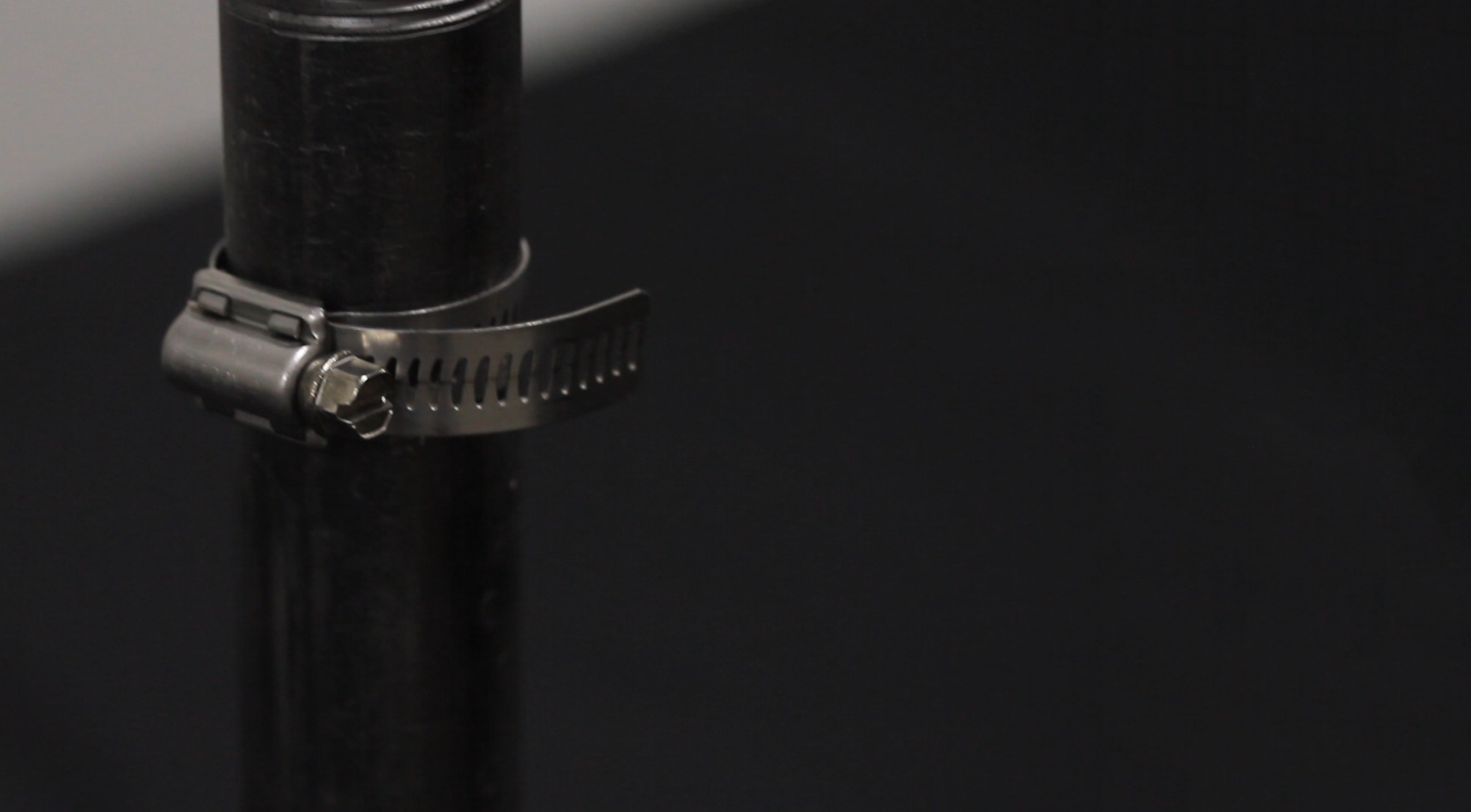
![[Video] Pool Installation: What Pipe Should you Use?](https://blog.boshart.com/hubfs/2022-08-22%20Catalog%20Photos-7-1.jpg)
SHARE